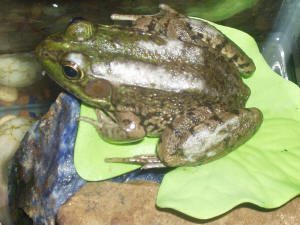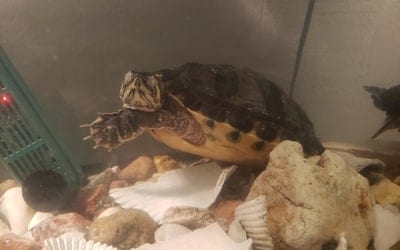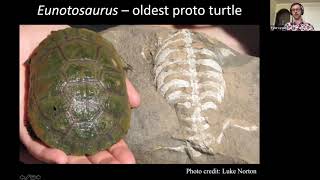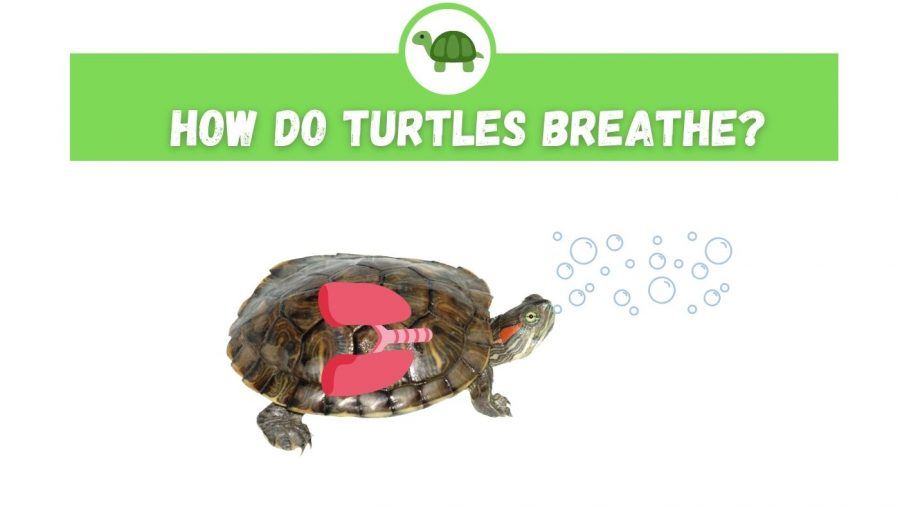
How and what turtles breathe under water and on land, the respiratory organs of sea and land turtles
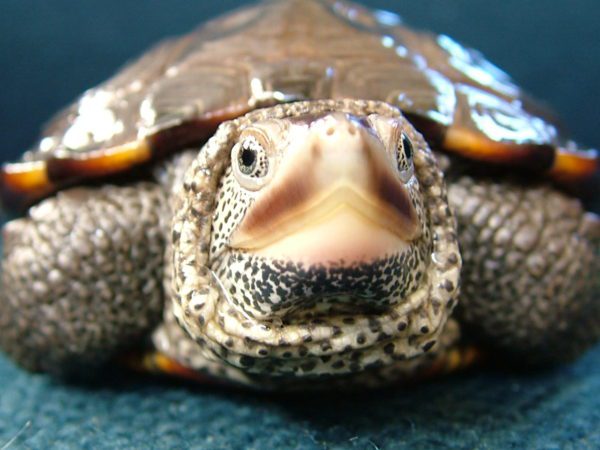
It is widely believed that red-eared and other turtles breathe underwater like fish – with gills. This is a misconception – all types of turtles are reptiles and breathe both on land and in water the same way – with the help of lungs. But the special type of respiratory organs of these animals allows them to use oxygen more economically, so they can retain air and stay under water for a long time.
Contents
Respiratory system device
In mammals, including humans, when breathing, the diaphragm expands and air is taken in by the lungs – this is done by movable ribs. In turtles, all the internal organs are surrounded by a shell, and the chest area is immobile, so the process of taking air is completely different. The respiratory system of these animals consists of the following organs:
- external nostrils – inhalation is carried out through them;
- internal nostrils (are called choanas) – located in the sky and adjacent to the laryngeal fissure;
- dilator – a muscle that opens the larynx when inhaling and exhaling;
- short trachea – consists of cartilaginous rings, conducts air to the bronchi;
- bronchi – branch in two, conducting oxygen to the lungs;
- lung tissue – located on the sides, occupying the upper part of the body.
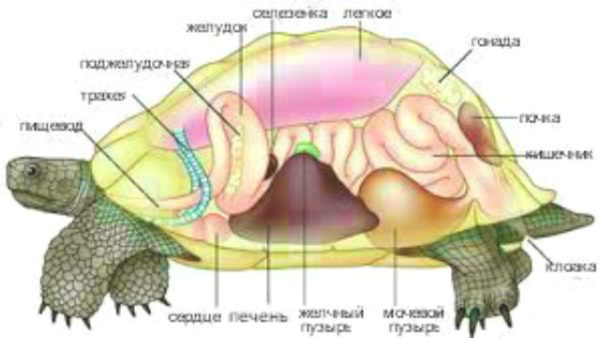
Turtle breathing is carried out thanks to two groups of muscles located in the abdomen. Reptiles do not have a diaphragm separating the internal organs from the lungs; when inhaling, the muscles simply push the organs away, allowing the spongy lung tissue to fill the entire space. When exhaling, a reverse movement occurs and the pressure of the internal organs causes the lungs to contract and throw out the exhaust air.
Often, the paws and head are also actively involved in the process – by drawing them in, the animal reduces the internal free space and pushes air out of the lungs. The absence of a diaphragm eliminates the formation of back pressure in the chest, so damage to the lungs does not stop the breathing process. Thanks to this, turtles can survive when the shell breaks.
Air intake is always carried out through the nostrils. If the turtle opens its mouth and tries to breathe through its mouth, this is a sign of illness.
Smell
Thanks to the complex structure of the respiratory system, turtles not only breathe, but receive information about the world around them through their sense of smell. Smells are the main source of information for these animals – they are necessary for the successful acquisition of food, orientation in the area, and communication with relatives. The olfactory receptors are located in the nostrils and in the mouth of the animal, therefore, in order to take in air, the turtle actively contracts the muscles of the floor of the mouth. Exhalation is carried out through the nostrils, sometimes with a sharp noise. You can often see how the animal yawns – this is also part of the process of smelling.
The device of the respiratory system, as well as the lack of muscles of the diaphragm, makes it impossible to cough. Therefore, the animal cannot independently remove foreign objects that have entered the bronchi, and most often dies in pulmonary inflammatory processes.
How many turtles can not breathe
When swimming near the surface of the water, turtles regularly rise to the surface to take in air. The number of breaths per minute depends on the type of animal, age and size of its shell. Most species take a breath every few minutes – marine species rise to the surface every 20 minutes. But all types of turtles can hold their breath for up to several hours.
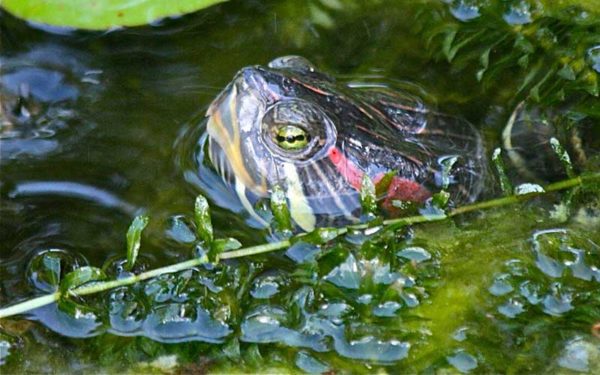
This is possible due to the large volume of lung tissue. In the red-eared turtle, the lungs occupy 14% of the body. Therefore, in one breath, the animal can gain oxygen for several hours under water. If the turtle does not swim, but lies motionless on the bottom, oxygen is consumed even more slowly, it can last almost a day.
Unlike aquatic species, land turtles carry out the breathing process more actively, taking up to 5-6 breaths per minute.
Unusual ways of breathing
In addition to ordinary breathing through the nostrils, most representatives of freshwater species are able to receive oxygen in another way. You can hear that aquatic turtles breathe through their buttocks – such a unique way really exists, and these animals are called “bimodally breathing”. Special cells located both in the animal’s throat and in the cloaca are able to absorb oxygen directly from the water. The inhalation and ejection of water from the cloaca creates a process that can really be called “booty breathing” – some species make several dozen such movements per minute. This allows the reptiles to make deep dives without rising to the surface for up to 10-12 hours.
The most prominent representative using a double respiratory system is the Fitzroy tortoise, which lives in the river of the same name in Australia. This turtle literally breathes underwater, thanks to special tissues in cloacal bags filled with many vessels. This gives her the opportunity not to float to the surface for up to several days. The disadvantage of this method of breathing is the high requirements for the purity of water – the animal will not be able to get oxygen from a cloudy liquid contaminated with various impurities.
The process of anaerobic respiration
After taking a breath, the turtle slowly sinks, the processes of oxygen absorption from the lungs into the blood continue for the next 10-20 minutes. Carbon dioxide accumulates without causing irritation, without requiring immediate expiration, as in mammals. At the same time, anaerobic respiration is activated, which at the final stage of absorption replaces gas exchange through the lung tissue.
During anaerobic respiration, tissues located at the back of the throat, in the cloaca, are used – the layering makes these pads look like gills. It only takes a few seconds for the animal to remove carbon dioxide and then re-take in air as it ascends. Most species exhale sharply into the water before raising their head above the surface and taking in air through their nostrils.
The exception is sea turtles – their respiratory organs do not include tissues in the cloaca or larynx, so in order to get oxygen, they have to float to the surface and inhale air through their nostrils.
Breathing during sleep
Some species of turtles spend their entire hibernation under water, sometimes in a pond completely covered with a layer of ice. Breathing during this period is carried out anaerobically through the skin, cesspool bags and special outgrowths in the larynx. All body processes during hibernation slow down or stop, so oxygen is needed only to supply the heart and brain.
Respiratory system in turtles
4.5 (90.8%) 50 votes



